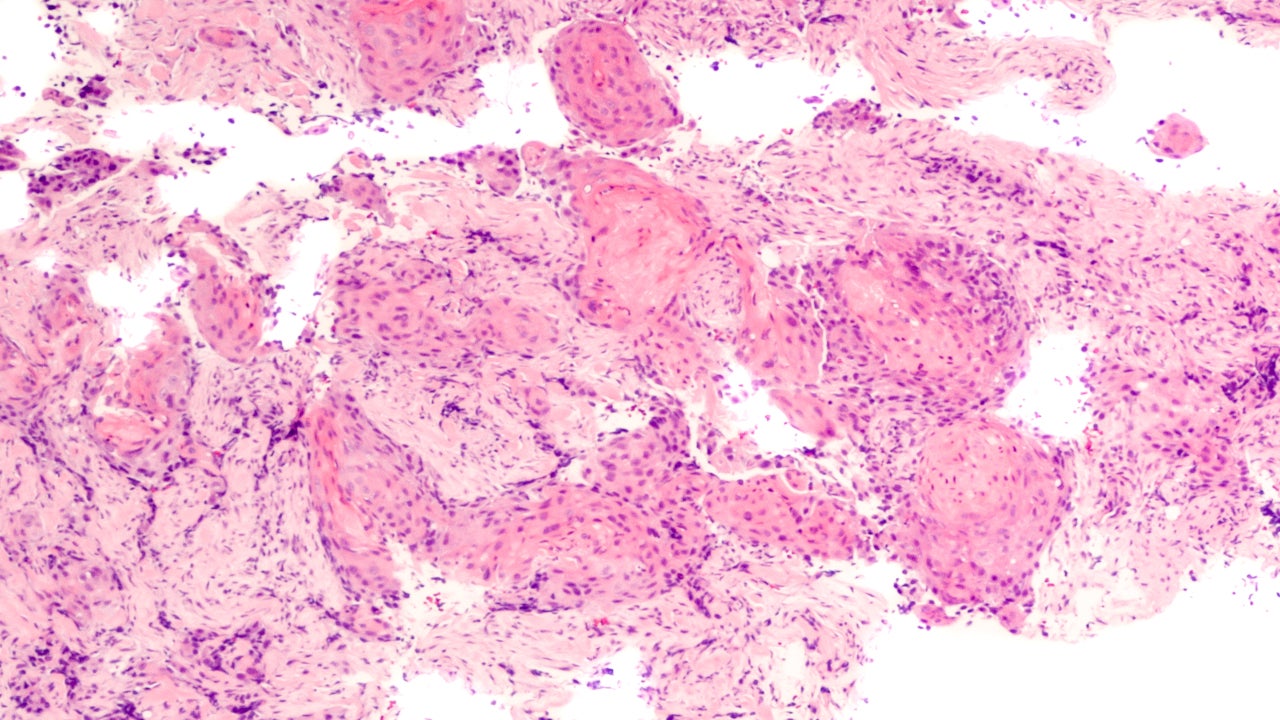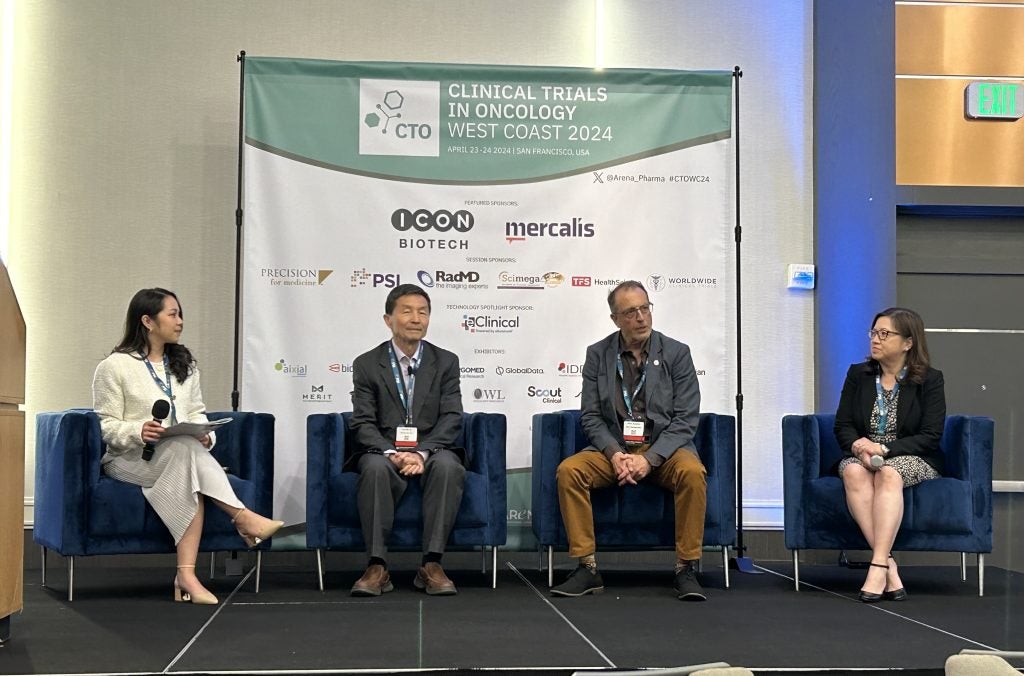
The adoption of Roche’s Tecentriq (atezolizumab) as an adjuvant treatment in non-small cell lung cancer (NSCLC) is unlikely without a survival improvement, most experts said, despite the Phase III IMpower010 hitting its disease free-survival (DFS) primary outcome. Nonetheless, one expert said the DFS results indicated a positive enough impact to back a SOC change, especially when compared to comparator chemotherapy, which is associated with low survival rates.
On 22 March Roche announced that the Phase III study met its DFS endpoint at an interim analysis in Stage II–IIIA NSCLC patients, while a pronounced benefit was seen in the PD-L1 population. The ASCO abstract (#8500), released today, will provide further efficacy details.
While the study met its primary endpoint, most experts emphasised the need for data on overall survival (OS), a secondary endpoint, to determine the total benefit of adjuvant Tecentriq and its use or approval. The caution stemmed partly from the fact that, unlike in advanced metastatic disease, the tumour is not actively growing in the adjuvant setting, and because the efficacy benefit was not very large. Without knowing the impact on survival, the field could risk overtreatment.
Moreover, experts referenced the experience with results of AstraZeneca’s EGFR inhibitor Tagrisso (osimertinib) use in the adjuvant setting. Even though the drug received an FDA approval as an adjuvant treatment for certain EGFR alterations, the field has been slow to accept it as the standard of care (SOC) without a pronounced survival benefit, experts said.
One additional factor that complicates the interpretation of not just IMpower010 but also other adjuvant checkpoint inhibitor trials is the use of the same drugs even earlier in the neoadjuvant space, which is mechanistically expected to be more effective.
How well do you really know your competitors?
Access the most comprehensive Company Profiles on the market, powered by GlobalData. Save hours of research. Gain competitive edge.

Thank you!
Your download email will arrive shortly
Not ready to buy yet? Download a free sample
We are confident about the unique quality of our Company Profiles. However, we want you to make the most beneficial decision for your business, so we offer a free sample that you can download by submitting the below form
By GlobalDataIn terms of safety, the field has become adept at handling checkpoint inhibitor-associated toxicities in other settings. However, detailed data is needed to make an accurate risk-benefit calculation especially given reported Grade 5 toxicities, experts said.
Analysts are closely watching these results, with one stating that the drug could compete for a $2bn-$3bn market, but efficacy across PD-1L+ and PD-L1-negative groups would be necessary to take advantage. Roche is expected to be first to market, with data still pending for others in the same setting, like Merck’s Keytruda (pembrolizumab), Bristol Myers Squibb’s Opdivio (nivolumab) and AstraZeneca’s Imfinzi (durvalumab).
Roche did not respond to a request for comment.
OS data crucial to support paradigm change
The DFS efficacy in the Stage II–IIIA was 42.3 months with Tecentriq compared to 35.3 months with best supportive care (BSC), with a hazard ratio (HR) of 0.79. In the PD-L1 TC greater or equal to 1% group, the median DFS with Tecentriq was not reached compared to 35.3 months with BSC and a statistically significant HR of 0.66 was reported, as per the ASCO abstract. The DFS benefit in the intent-to-treat population of Stage IB-IIIA did not cross the significance boundary.
The 0.66 HR is interesting but it will have to translate into an OS improvement to be significant, said Dr Bertrand Mennecier, hospital practitioner, Hôpitaux Universitaires de Strasbourg, France. The preliminary data is encouraging, but whether a DFS benefit alone is enough to change practice in the adjuvant setting is unclear, said Dr Justin Gainor, director, Center for Thoracic Cancers, Massachusetts General Cancer Center, Boston. Dr Noemi Reguart, clinical professor, University of Barcelona, Spain, agreed, saying it may not be enough to make the SOC change at least in Europe.
DFS is a not a good marker for immunotherapy efficacy because subsequent treatments have an impact on OS, said Mennecier. Also, since patients were previously treated with chemotherapy, it is not clear if the DFS is due to the chemotherapy or Tecentriq, said Reguart. The benefit could be driven by a combination of the two, agreed Dr Nasser Altorki, director, Division of Thoracic Surgery, New York Presbyterian-Weill Cornell Medical Center, New York. However, Altorki also said the IMpower010 DFS data advanced the field because chemotherapy, the only other option available in this setting, only improves OS by around 5% in five years as per historical data.
One of the risks of adjuvant drug therapy is overtreatment in patients who are cured by surgery, said Dr Christopher Azzoli, director, Thoracic Oncology, Lifespan Cancer Institute, Providence, Rhode Island. It is not yet clear if all subgroups will have the same benefit, but the HR of 0.66 could be significant for the Stage IIIA group, said Mennecier. The 1,280-patient IMpower010 study compared adjuvant Tecentriq to BSC in patients with Stage IB–IIIA NSCLC. Data in the all-comers population of Stage IB–IIIA is not yet mature, while the efficacy based on patient subgroups was not provided in the abstract.
The PD-L1 TC greater or equal to 1% cutoff used to define that subgroup is relatively liberal and among patients with metastatic disease, about 70% qualify for that criteria, Gainor said. More data is needed to understand if the benefit is limited to those with higher PD-L1 expression levels, he added. Reguart agreed that a difference in benefit based on PD-L1 expression would be informative, even if it is exploratory.
Even for other therapies in the space, a lack of OS benefit has hampered uptake. Despite the HR of 0.2 observed in the Phase III ADAURA trial with Tagrisso, there is still a debate on its use given the lack of demonstrated OS benefit, Gainor said. Even though the differences in OS curves in ADAURA were significant, some in the clinical community are still cautious in adapting that into clinical care, said Reguart. In the ADAURA trial, median DFS was not reached on the Tagrisso arm but compared to placebo, the HR was 0.17 (p<0.0001) in Stage II–IIIA patients, and 0.2 (p<0.0001) in the overall trial population. Nevertheless, Tagrisso is an EGFR TKI and it is unknown if EGFR inhibition translates into cures, but given checkpoint inhibitors’ mechanism, a DFS benefit is more likely to eventually translate into an OS advantage, said Gainor.
In terms of Tecentriq’s regulatory prospects, DFS data may be sufficient since it was the primary endpoint, and Tagrisso was approved based on DFS data, said Altorki. The difference in efficacy is clinically significant in the Stage II and IIIA groups that have a high recurrence risk, he said. Azzoli added that in high-risk or Stage III patients, even a DFS improvement could be compelling, but it is not clear if DFS data alone, especially for low-risk patients, is enough to lead to an approval.
In terms of the toxicity profile, Grade 3/4 events were noted in 21.8% with Tecentriq and 11.5% in the comparator arm, respectively, while Grade 5 treatment-related adverse events occurred in 0.8% of patients in the Tecentriq arm. This safety profile factors into the treatment decision-making process, especially in people who could have been cured already by the time they receive an adjuvant therapy, Gainor and Mennecier said. In such circumstances, any potential for a fatal toxicity does stand out, Gainor said.
Neoadjuvant setting holds much promise
Another aspect that makes the data interpretation challenging is the potential benefit with an earlier use of immunotherapy. It will be a while before OS data is available and the best strategy is identified, Gainor said. In IMpower010, OS is being measured over an approximately 10-year time frame. However, neoadjuvant treatment could be a better strategy than using immunotherapy in the adjuvant setting, said Mennecier. The preclinical science indicates that the immunotherapy may be best suited in the neoadjuvant setting compared to later in the treatment landscape, but that remains to be proven, said Altorki. Reguart agreed, adding that giving immunotherapy in the neoadjuvant setting when the tumour is present to stimulate the lymphocytes makes mechanistic sense.
Moreover, since neoadjuvant therapy involves fewer cycles of immunotherapy than treatment in the adjuvant setting, experts said. A direct comparison will be needed to understand which strategy could be better to decide SOC, said Altorki.
Nonetheless, using Tecentriq is the adjuvant setting should not eliminate the option to treat in the metastatic setting altogether, said Altorki. If a tumour recurs early, then the patient may not have responded to immunotherapy in the first place, he said. Factors like the timing of progression after a therapy could give an estimate of whether PD-1 or PD-L1 blockade could be used again but data is needed to back that up, said Gainor. However, the cutoff time for that with immunotherapy is unknown so the best treatment strategy after progression on a checkpoint inhibitor is still being investigated, he said.
Manasi Vaidya is a Associate Editor for Pharmaceutical Technology parent company GlobalData’s investigative journalism team. A version of this article originally appeared on the Insights module of GlobalData’s Pharmaceutical Intelligence Center. To access more articles like this, visit GlobalData.
Clarification: An earlier version of this article incorrectly stated the Stage II-IIIA group as the ITT population. Paragraph 9 has been amended accordingly.









Related Company Profiles
Merck & Co Inc
Bristol-Myers Squibb Co
AstraZeneca Plc